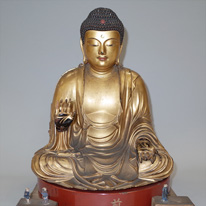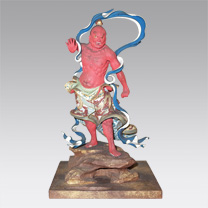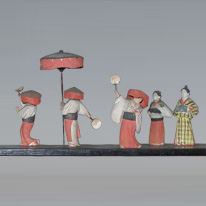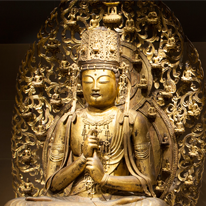Past Exhibitions
- Japanese Sculpture in the Age of Kōrin
- October 10, 2015 - November 23, 2015
Shimizu Ryūkei (1659–1732) was a sculptor who lived around the same time as the Rinpa artist Ogata Kōrin (1651–1716). During the Genroku and Shōtoku eras (1688–1716), Ryūkei worked under the renowned sculptor and priest Tankai (1629–1716), founder of the temple Hōzan-ji in the Ikoma area of Nara. After Tankai's death, he began making small doll-like sculptures, at which he was particularly gifted. One series he made, entitled Fūzoku hyakunin isshū (Customs of One Hundred Members of Society), shows aristocrats, daimyo lords, and merchants caught in various poses of daily life. Ryūkei II (1729–1795), who studied with the students of Ryūkei I, lived around the time of the painter Maruyama Ōkyo (1733–1795). In addition to the works on view here, he also created sculptures for various temples in Kyoto. When Rinpa artist Ogata Kōrin was an infant in 1662, an earthquake destroyed the enormous bronze Great Buddha at Kyoto’s Hōkō-ji Temple (located on the north side of the Kyoto National Museum). The Great Buddha was thereafter reconstructed in wood in the form replicated in the small model on view here. This is the incarnation of the Great Buddha would have been seen by Kōrin and his brother Kenzan. Unfortunately, it too was later lost to fire.
- Japanese Sculpture
- October 10, 2015 - November 23, 2015















